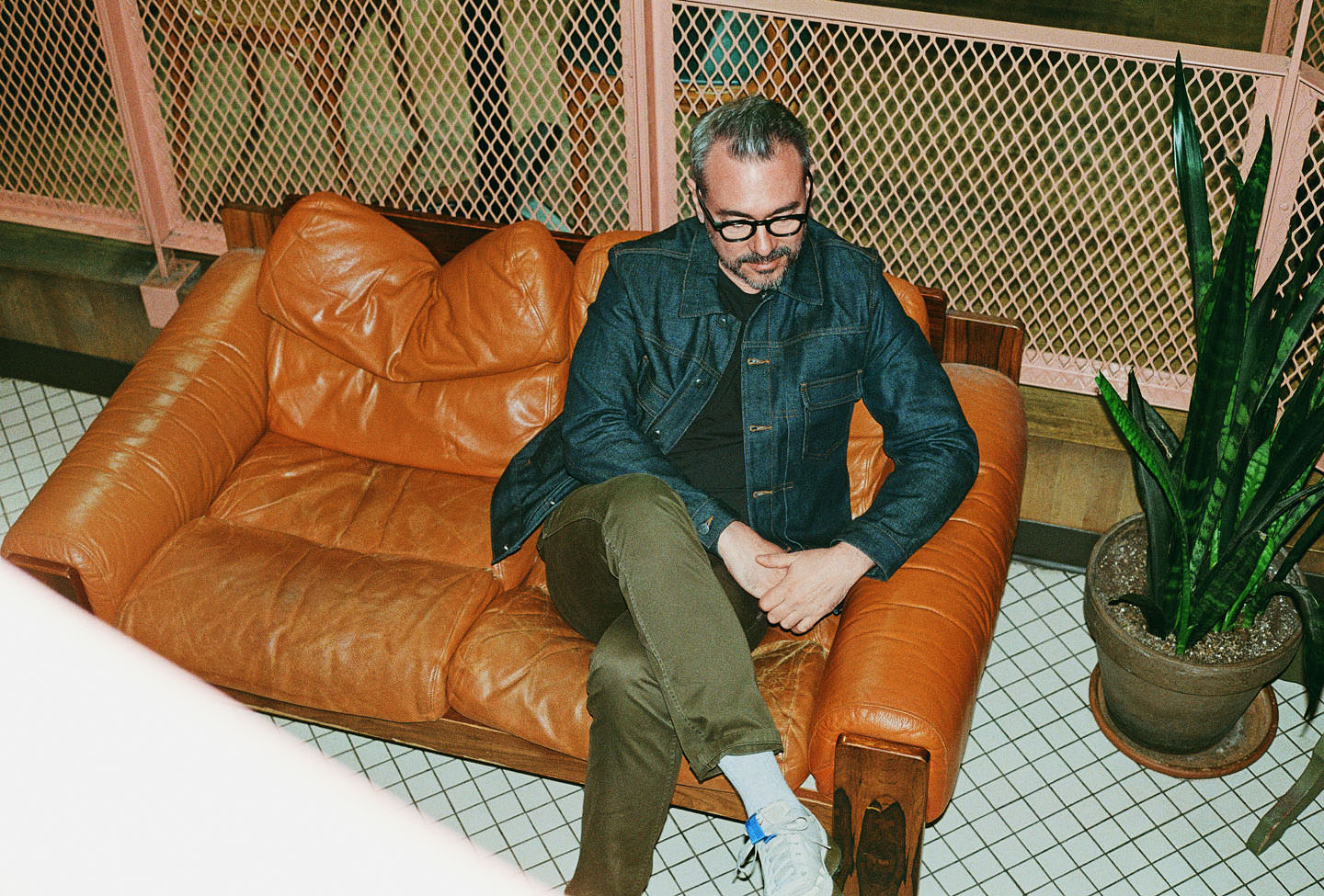Zébulon Perron is showing me his favourite spots in Montreal. A designer by profession, and a social animal by instinct, Perron naturally leans into places where people gather: restaurants, cafés, stores. As we hop in and out of his car, navigating knee-high drifts of snow, his enthusiasm for the city in which he was born and bred is infectious.
Like Montreal itself, Perron embraces contrasts: at luxe clothing store Ssense, he revels in the juxtaposition of its 19th-century exterior with the uncompromisingly modern interior designed by famed British architect David Chipperfield. Perron leads me through the store’s five levels, his face lighting up as he draws my attention to how the thick walls of grey concrete make the clothing pop, or pockets of exposed original brickwork provide textural interest.
Our next stop is just around the corner and one of his own designs—the Italian restaurant Un Po’di Più. With its stunning geometric tiled floor, focal point curved pewter bartop, and glorious pops of teal and orange, it’s an inviting, glamorous space that combines both antique and custom touches inspired by classic Milanese aperitivo culture.
“Just being in Milan in and of itself is inspiring,” Perron tells me when we meet again this spring, a little over a year later. He is just back from attending Salone del Mobile, the influential annual design fair in Milan. “I have probably 700 photos of door pulls,” he admits, laughing.
This time we are chatting at his studio, Atelier Zébulon Perron, on the top floor of an industrial building on the western boundary of Montreal’s eclectic Mile End neighbourhood where Perron grew up. Bright and airy, with high ceilings and big windows, the studio is one of several creative agencies with offices in the building, including lighting designers—and his close collaborators—Lambert & Fils. It is also, Perron tells me, a mere seven-minute stroll from his house, as well as within walking distance of the homes of both his mother and his 15-year-old daughter and her mom.
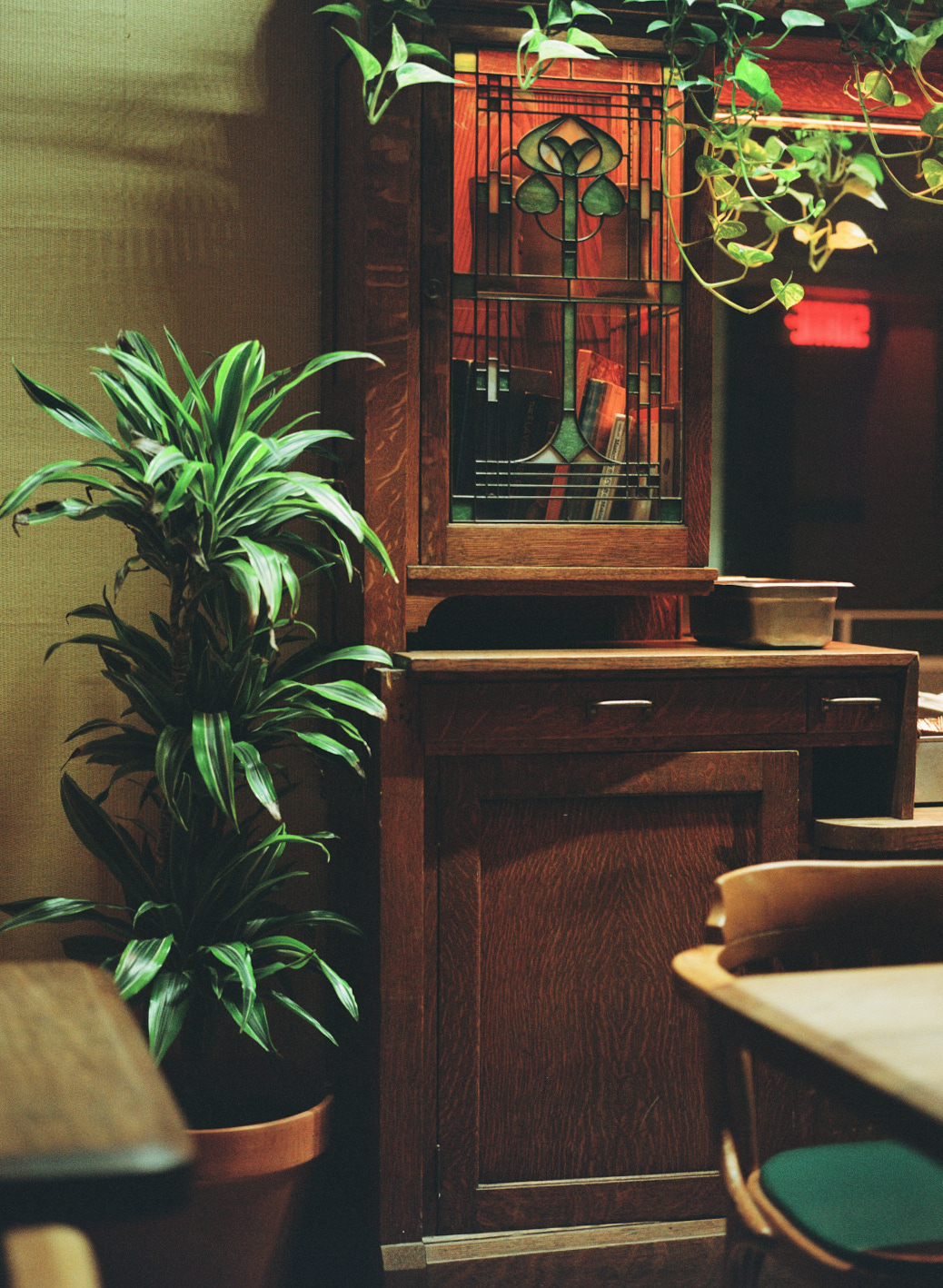
Through the open plan office is an even larger space where current projects are laid out with sketches, renderings, photos, swatches, and other design paraphernalia. These are very much works in progress: a new Montreal restaurant for Top Chef Canada runner-up Danny Smiles, a music studio in Paris, a public library and multipurpose building in downtown Montreal, his third restaurant in Florida in as many years…
If the spaces he creates are all very different, there are clear signature touches, from his love of mixing modern with vintage, velvet with leather, pattern with clean lines, to his clear passion for a statement bar, custom lighting, and bold colour palettes. An impeccable eye for detail is hardly surprising in a successful designer, but look at his celebrated room for Café Constance at the home of Les Grands Ballets Canadiens with its pink tutu-esque pendant lights, and you see that his is infused with something rarer—a large splash of whimsy.
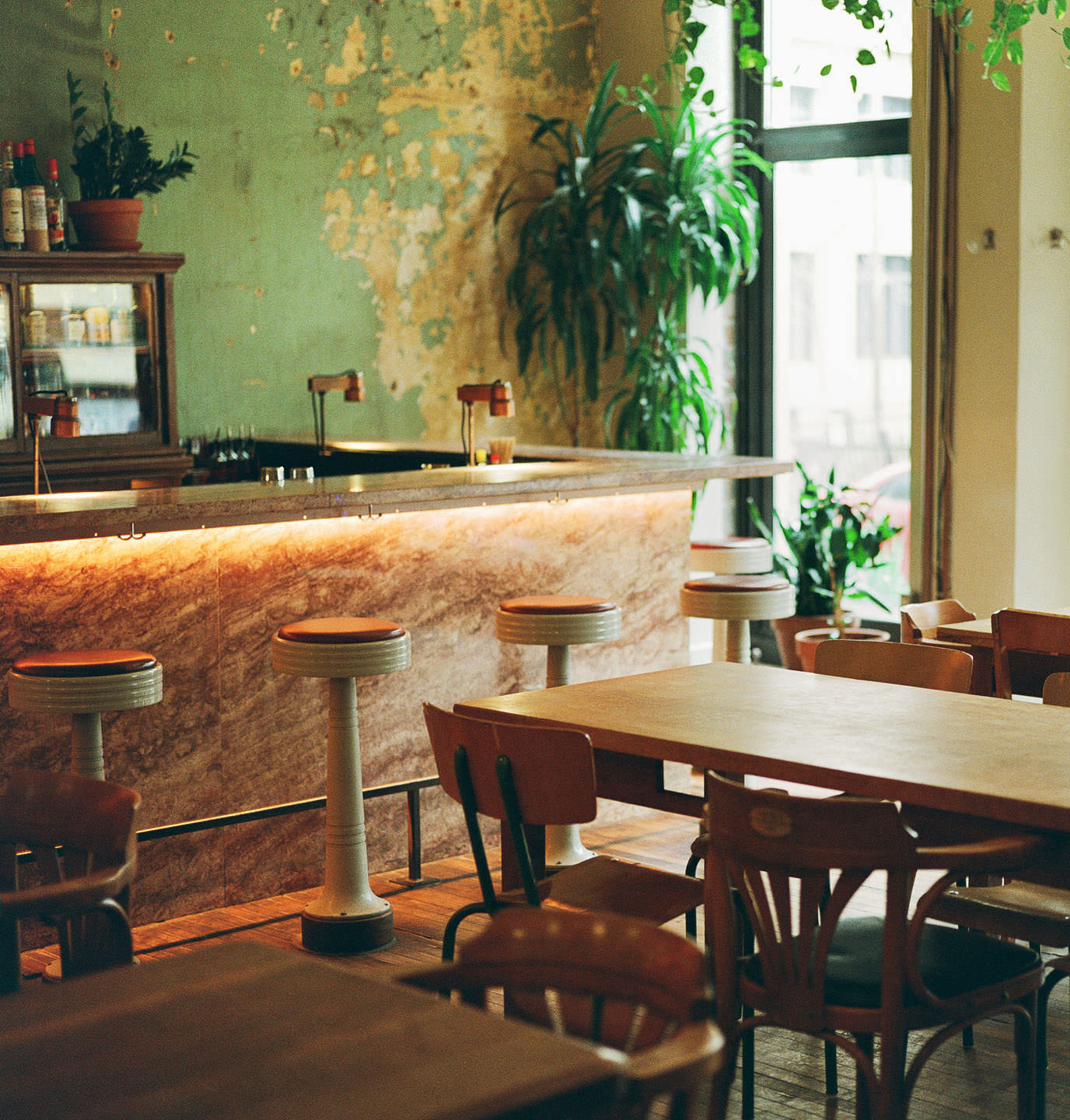
“A bit like Fantasia, you open this box and all this magical stuff comes out,” he says of Café Constance. “How do we create that in this moment, in this more stern setting? How do you make it strange and wonderful? It’s got to be fun.”
He estimates that about 25 per cent of the atelier’s commissions are out of town, the rest in Montreal. Operating predominately in the hospitality space, his fingerprints are all across his home city, responsible for bars and restaurants in major hotels (Marcus at the Four Seasons, Henri Brasserie Française at Hotel Birks, Le Boulevardier at Le Germain) as well as many standalone spaces (bar Rouge Gorge, Mexican restaurant Pancho, tapas bar Ibérica…).
“At the core of our practice is social economics. And what I mean by that is that we are really, really interested in how people come together in a space.”
“The studio has been through a lot of different periods—we grew a lot for a while, and we were getting up there, we were 30 people at some point,” he notes. “We pared it back to about 15 now, and that seems to be the sweet spot in terms of managing the studio and keeping the quality.
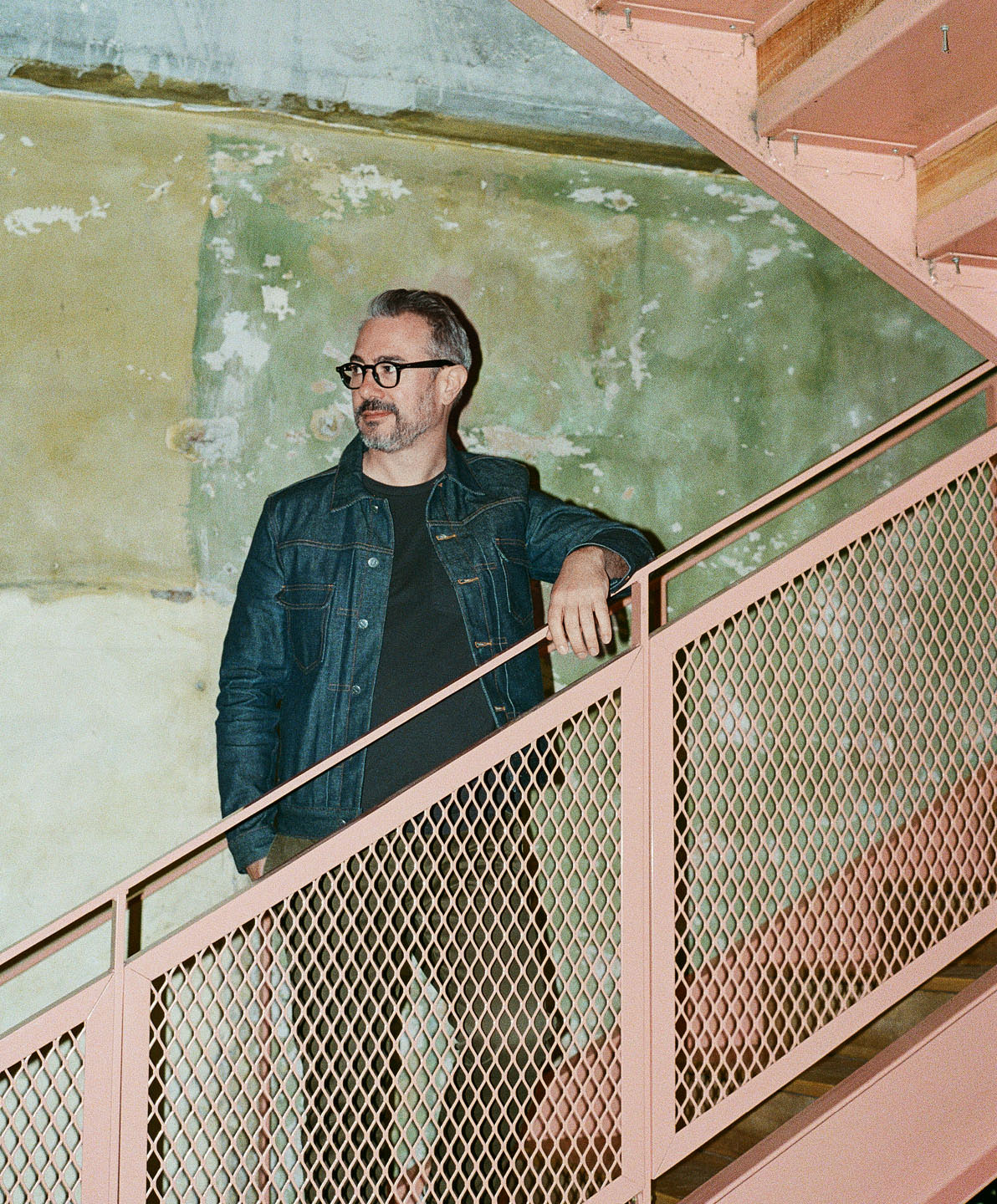
“We turn down work all the time,” he adds with a shrug. “I guess that’s our privilege. It’s hard to do sometimes—people won’t take no for an answer. It’s not always simple, but I think for the benefit of our work and our own satisfaction, keeping things real, paying attention to details, and making sure we are working at the level that we want to be at, this is the right spot.”
His gift, he says, is to be able to immerse himself in the perspective of the end user. “At the core of our practice is social economics. And what I mean by that is that we are really, really interested in how people come together in a space, how they socialize and interact, and how we, as space designers, how we articulate the space has an influence on that.
“We concentrate on spaces that serve people,” Perron explains. “There has to be people, that’s the main thing. That’s why we don’t do private residences and other projects where there is no public involved in the broad sense.”
It’s his avowed opinion that every great city needs a great brasserie, a position underlined by the Montreal restaurant he says is his favourite anywhere in the world: L’Express. The iconic spot, with its black-and-white-tiled floor, red-leather bar seats, and servers in black waistcoats and crisp white waist aprons, has been pumping out sterling plates of classic French dishes in the Plateau 15 hours a day, seven days a week since 1980. But more than that, it was designed by Luc Laporte, the Montreal architect credited with defining much of the city’s urban character.
“For me, the person in Montreal that really inspired me to do this for a living was Laporte,” Perron enthuses. “I really loved his designs—a no-plastic look—really inspiring work with materials. To this day, I think this is very much part of our DNA.
“There are all these things that come and inform a project. You have the genius of the fantastic food and the fantastic service and then the whole clown show that goes on around it, and it just makes this really special place,” he adds. “There’s nothing like it in the world.”
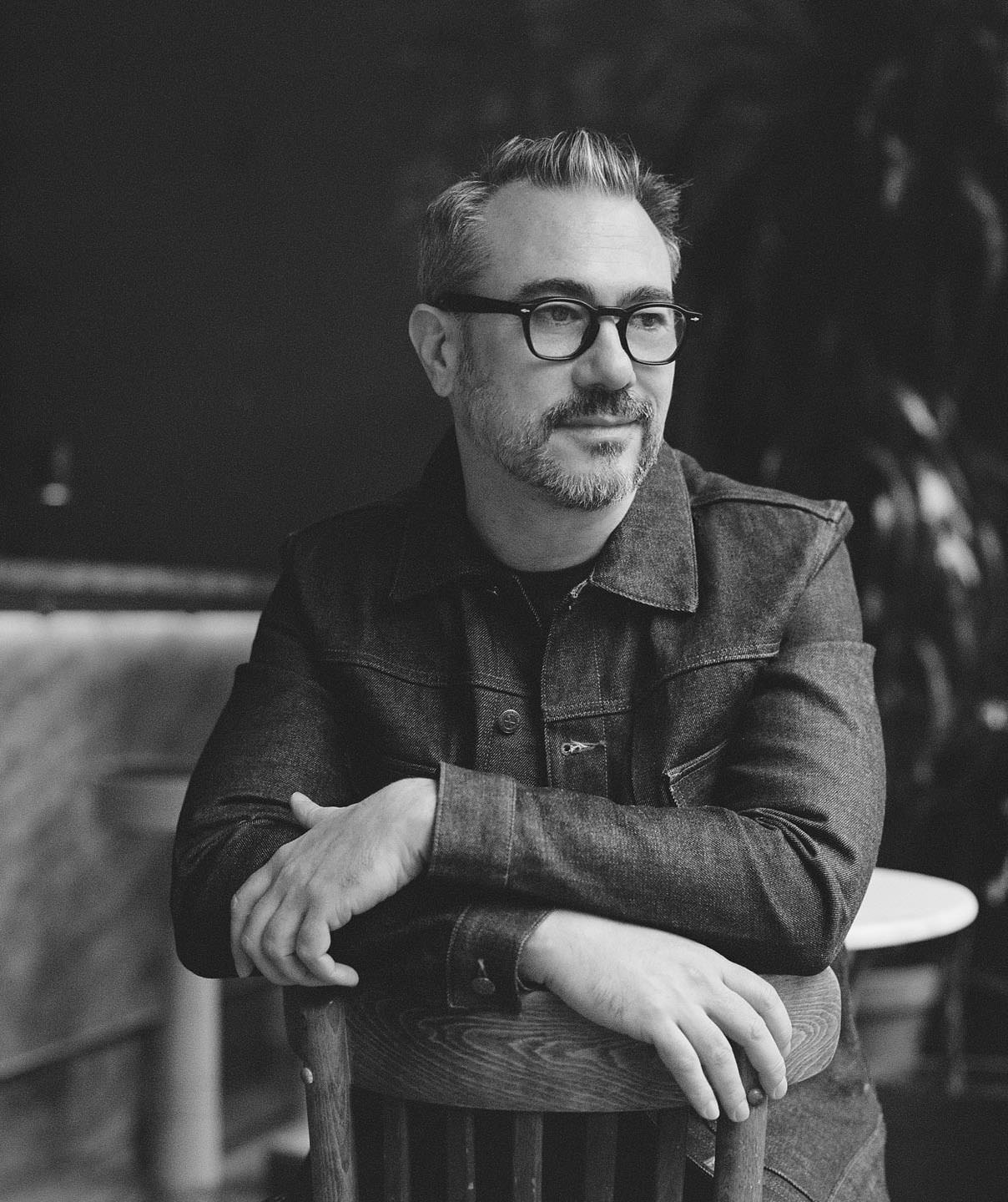
It doesn’t take long to realize that Perron’s love of restaurants and lounges is hard-wired. He grew up sitting at the bar with his brother Willo, sipping Shirley Temples while their father, the late Montreal jazz musician Billy Georgette, played piano. (This is a talented family: Willo is also a celebrated designer and creative director who has worked with Jay-Z, Rihanna, and more.)
If he wasn’t already destined for a career in hospitality, Perron’s experience bartending through university sealed his path. “I found out that chefs are pretty crazy, but sometimes they are very interesting and talented. It’s kind of a circus, but in a good way—it’s entertaining.
“It was a very interesting milieu to be part of, and I wanted to do it,” he continues. “I was a very bad waiter, and I can’t cook, so I had to find something else, and this was it.”
Alongside the high-end, luxurious designs he creates for others, Perron is also a partner in a clutch of restaurants tucked away on an unprepossessing downtown street in the former fur district. The aptly named Bar Furco came first in 2012, followed by Café Parvis two years later. At the beginning of May this year, a third restaurant—Papito—was unveiled just around the corner.
“This is something I wouldn’t have done with a regular client,” he proffers. “It was a very interesting exercise that we put ourselves through. We had two thoughts: what’s the minimum amount of money that we can spend opening a restaurant? And two: we were intent on reusing as much as we could.”
To that end, he says, almost everything in Papito is either vintage, or built from recouped or retrofitted materials: doors, furniture, lamps. The bar was created from plywood furniture they dismantled and reworked. “It’s a very cool project in that sense for me because there’s an economy of means: what’s the minimum you can do and still create a good ambience and a fun place to be?”

Perron’s good friend and chef Éric Bélanger—and one of the other partners—made a chance remark when they were conceiving Café Parvis that crystalized for him the importance of life experience and memory when it comes to design. Perron’s mother, he explains, loved to make art and would take her two sons to bohemian cafés where they would sit and draw.
When Bélanger said he wanted Café Parvis to have a granola vibe, Perron’s response was visceral. “I was like, ‘This is how I grew up. This I know.’
“I realized with that project that memory is an important material, perhaps the most important, in the sense that with memory there is emotion.”
Perhaps that’s why, of all the places Perron has recommended or shown me in Montreal, Café Parvis is the one I return to with my student son whenever I visit. His designs for others are stimulating and exciting, comfortable and impeccably finished, but entering Parvis feels like visiting an old friend, with its hanging plants, mismatched furniture, and unpretentious vibe.
“Parvis is basically a perpetual work in progress,” Perron says. “We all agreed that’s what it was going to be, and that’s its charm. It’s unfinished and will always be unfinished, but it’s always evolving.
“It’s really coming from a place of personal experience,” he adds, thoughtfully. “That’s why I keep travelling, to nurture that process. You never know where it’s going to come out on what project and which circumstance.”
Read more from our Summer 2024 issue.

